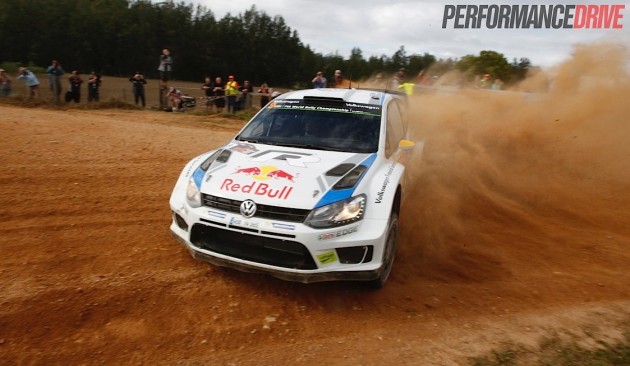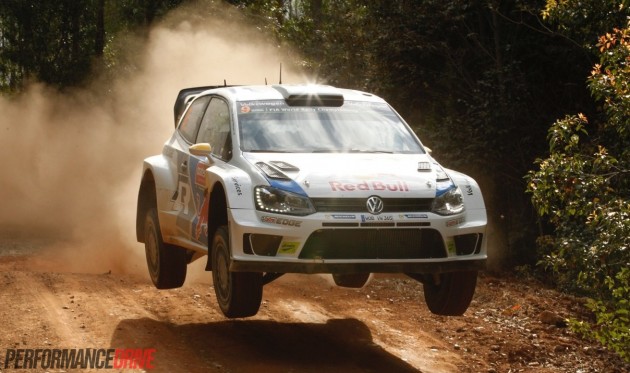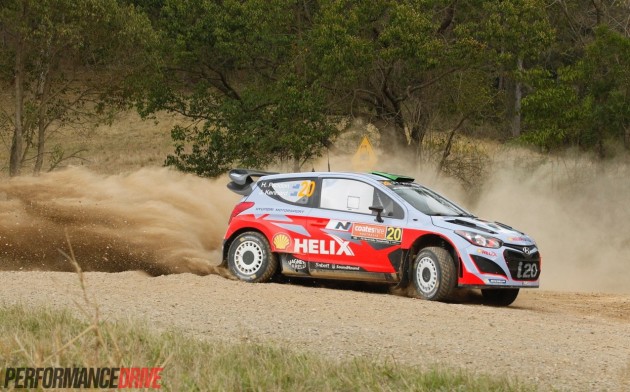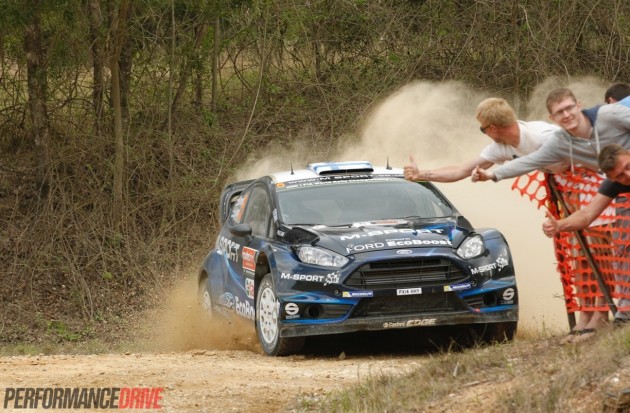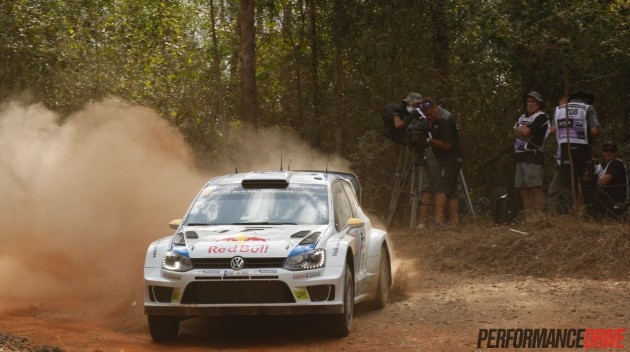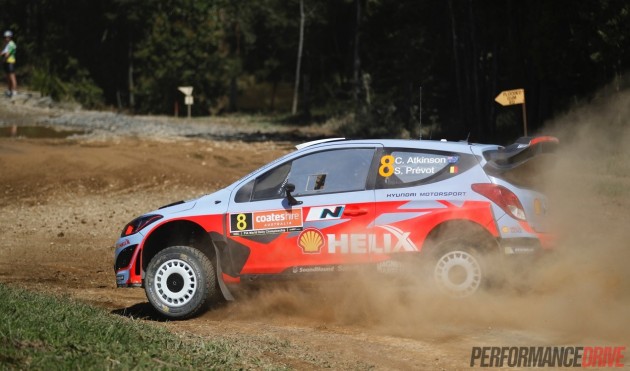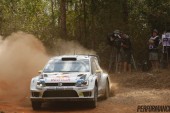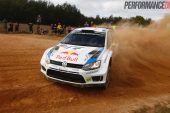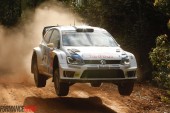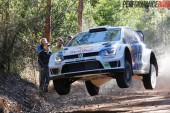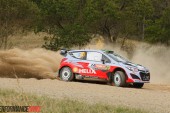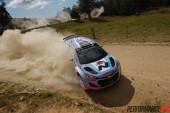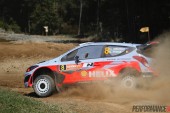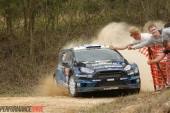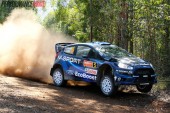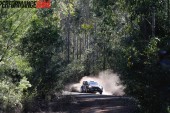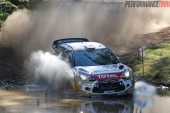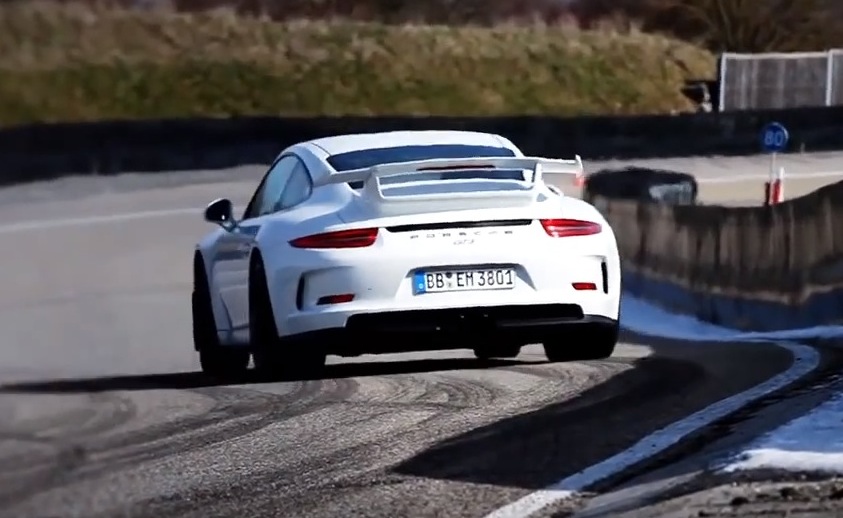It seems that ASIO is not the only organisation in Australia that is capable of the highest levels of secrecy. The organisation behind the 2014 Rally Australia in Coffs Harbour last weekend was even more adept at shielding the general public from knowledge of this amazing motor sport event.
Resident on the east coast of Australia for the past five years, in which the WRC event has run four times – three in Coffs Harbour and once around the Northern Rivers around Murwillumbah – Rally Australia was for close to 20 years entrenched in Perth where it was a favourite amongst rally teams and rally fans. With its ball bearing gravel roads and spectacular backdrops WA gave Rally Australia the perfect home and established it as one of the great events on the WRC calendar.
That is not to say the east coast does not have great roads and back drops, it’s just that since Rally Australia crossed the Nullarbor it has been largely unheralded in any of the major cities on this side of the country. This is despite having works rally teams competing from Volkswagen, Ford, Hyundai and Citroen.
Major media outlets did not utter a word about Rally Australia over the weekend, with no stories in the Daily Telegraph or on commercial radio in the major cities, and when it came to TV it was all footy finals and a little bit on V8 Supercars at Sandown, and some Moto GP in Italy. Nothing on Australia’s round of a world motorsport championship appeared in major city media. The one exception was a piece in the Sydney Morning Herald social pages about VW driver, Norway’s Andreas Mikkelsen, being pretty good ‘eye candy for the ladies’.
For all of that, the fact is the Rally Australia is an amazing motorsport spectacle. It’s filled with drivers and co-drivers that know no fear, travelling roads in amazing high technology machines that can accelerate to 100 km/h on gravel in less than four seconds, boast a top speed of more than 200km/h, have suspension travel of more than 300mm, and are fitted with brakes that will haul a car to a stop on loose surfaces from 200km/h. And they keep doing it reliably in the heat of battle for anything up to 50 kilometres at a time. These $1 million machines truly are the Formula 1 cars of the forest, brim full of the latest suspension, engine and brake technology with exotic materials from carbon fibre to ‘unobtainium’
To truly understand the speed of these 1.6 litre turbocharged four-cylinder rally cars you have to stand on the edge of a narrow forestry track deep in the bush and witness the sheer unbelievable velocity these heroes of motorsport can attain. Weaving a path through tree-lined gravel roads, leaping 50 metres at a time, and quite literally throwing the cars around corners; the cars and drivers really do command your attention and respect.
Even for a hardened rally head like this writer, today’s World Rally Cars are a thing of wonderment. Vivid memories of Audi Quattros from the early 1980s, through the Lancias and Toyota GT Fours of the 1990s, to Subarus and Mitsubishis of the early 2000s, and even the all-conquering Citroens of Sebastien Loeb’s decade of domination, the speed of today’s cars is astounding. Partly because of the engine technology but also as a result of the amazing suspension and brakes that allow the drivers to keep the loud pedal buried way beyond the limits of mere mortal machines.
On the shakedown stage – the rally equivalent of free practice at a race circuit – near the hinterland town of Bellingen on the day before the rally started even I was astounded by the pace generated by the top drivers. The cars could easily outpace my camera pan as I stood on the side of the track in the dusty forest. An ever so slight hump on the track launched the cars into a wild jump, with the machines leaping almost two metres in the air and keeping them airborne for more than 50 metres. It’s incredible stuff.
Speaking with twice World Rally Champion co-driver Luis Moya, a man who sat alongside rally legend Carlos Sainz in the 1980s and 90s and who now fulfils roles with VW motorsport as a team co-ordinator and ambassador, the rally cars of today are also kinder on the bodies of the driver and co-driver and a whole lot safer as well.
“On rough rallies in the past co-drivers would have back problems and be shaken quite badly after three days in the car. The same for the drivers. But the suspension on these new generation rally cars is just incredible and makes it so much easier to go fast across all sorts of terrain,” Moya said.
So the weekend unfolded around Coffs, despite the secrecy in Australia’s capital cities and across the country, starting Friday and continuing through hard tough days at breakneck speed on close to 340km of closed gravel roads. Despite a high attrition and crash rate in recent WRC rounds, Australia proved fast but not too damaging for the high tech forest racers with everyone of the 11 WRC machines making the finish line.
Following a disaster on VW’s home round of the WRC in Germany, where both reigning champ Frenchman Sebastien Ogier and VW team mate Jari Matti Latvala crashed out while leading Hyundai on its maiden WRC victory, the VW war machine rolled into Coffs Harbour intent on reclaiming the dominance of the Volkswagen team.
Despite some early tyre choice problems and challenges, and the early pace of Ulsterman Kris Meeke and his Citroen, the VW juggernaut slowly tightened its grip on the three-day Rally Australia.
In the end it was a complete reversal of the Deutschland debacle. This time it would be a complete VW lock out on the podium with Ogier leading home Latvala by 6.8 seconds, with their young Norwegian colleague Mikkelsen in third a further 1 min and 11 seconds in arrears.
With the German dominance, the best of the rest was Kris Meeke in fourth – his best ever WRC result in his first full season in a WRC car, and with the Citroen team – while Finn Mikko Hirvonen drove the wheels off his Ford Fiesta but could only manage fifth almost 2 minutes behind Ogier.
Kiwi prodigy Haydon Paddon did his chances of securing a full-time drive with the fledgling and rapidly improving Hyundai team no harm at all by taking sixth, ahead of team leader and Rally Deutschland winner Thierry Neuville of Belgium in seventh.
For Aussie Chris Atkinson a lack of seat time in recent years and recent months weighed heavily on his ability to extract the most from his Hyundai and his chances of retaining even a part-time seat in the Korean manufacturers team appear slim after a tenth place on his home event. Only time will tell if the one-time Subaru works WRC driver from the Gold Coast can again secure a full-time drive in the championship.
The VW Polo R WRC cars may not be like the ones you or I can buy from the local VW dealer, but the success of the German carmaker’s rally campaign has provided it a massive marketing boost around the globe particularly in Europe where rallying is ranked a close second to Formula One.
After a weekend of frenetic action in and around Coffs Harbour the town can return to normality for another 12 months. And the lack of publicity surrounding Rally Australia may again see this amazing event – one of only two FIA World Championship events run here, along with the F1 GP – hidden from mass media view. It is such a pity that more people cannot see and experience what is an extraordinary motorsport spectacle
